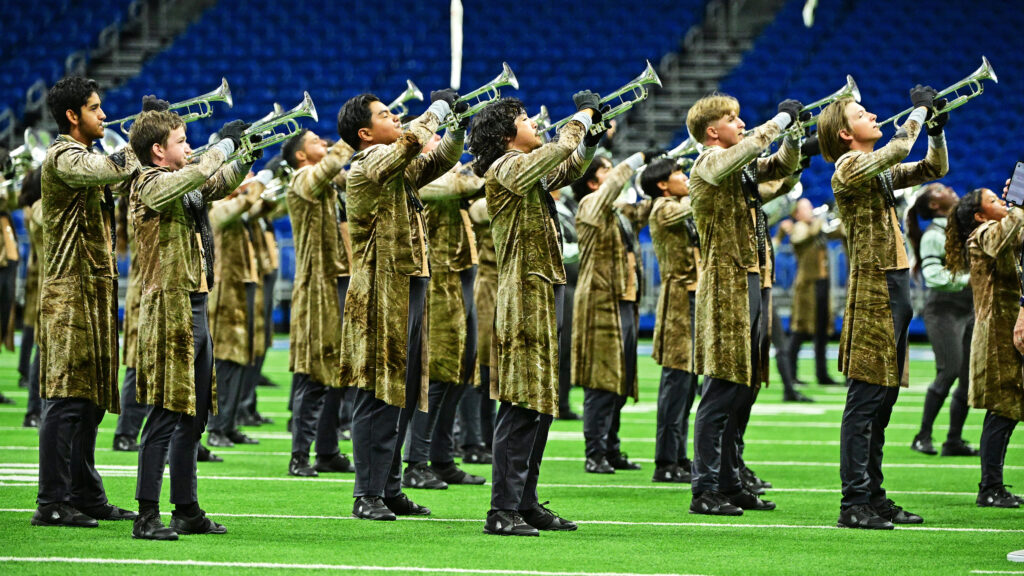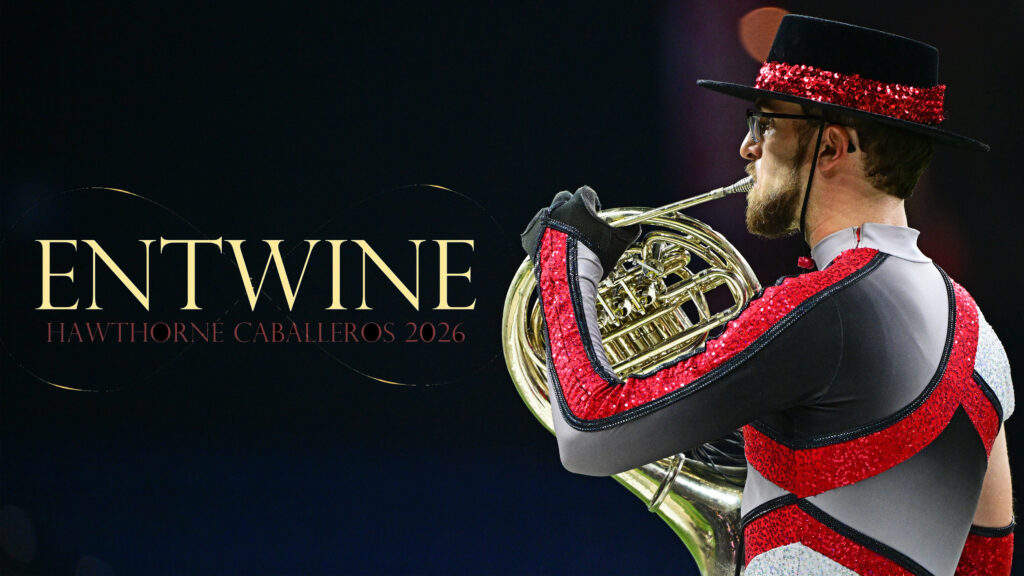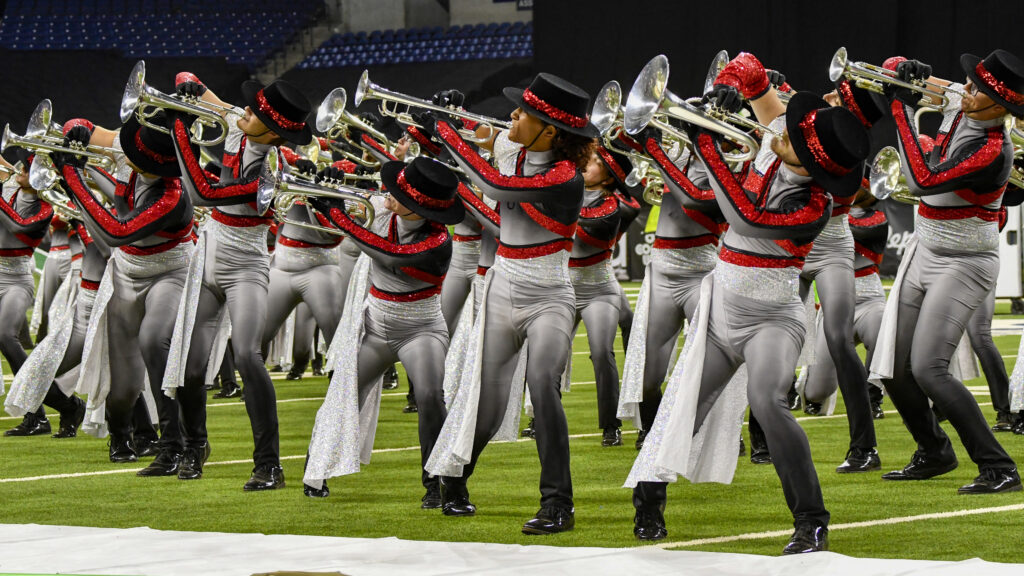In 1987, the Drum Corps International World Championships returned to Madison, Wisconsin’s Camp Randall Stadium for the third year in a row. That third visit to the University of Wisconsin was a charm for the Bluecoats, who earned a spot among the top-12 finalists for the first time.
By any definition, the success story of the season was the Garfield Cadets, who won the title after earlier in the season losing to 10th-place Spirit of Atlanta three times. The Cadets’ victory resulted in the corps’ fourth title in five years, which came at the expense of Santa Clara Vanguard, who finished in second place by just a tenth of a point after losing only the last two shows of the season.
Each of the top-two corps won only one caption outright on the judge’s score sheets and tied in two other captions. The fourth-place Blue Devils, who were passed up in the Finals competition by Cavaliers, didn’t win a single caption, breaking a record that stood since 1976. It was also the first time after 11 years that the Devils didn’t place in the top-three.

Finishing the 1987 season in fifth place, Phantom Regiment debuted all-white uniforms to complement the corps’ production, “Songs from the Winter Palace.” The show was based on “Swan Lake Ballet” and “Nutcracker Ballet,” two works by Peter I. Tchaikovsky.
The show opened with selections from “Swan Lake Ballet,” composed in 1875 on commission from Moscow’s Russian Imperial Theatre. The ballet is based on a Russian folktale, telling the story of a princess who was turned into a swan. Now one of the most popular ballets ever written, at the time it was considered a flop, and dancers complained they had great difficulty dancing to the music. Both conductors and choreographers disregarded the ballet, and it wasn’t revived until after Tchaikovsky’s death.
Silver diagonal sashes on Phantom Regiment’s brass and percussionists and wide silver lamé ribbons on the skirts of the color guard members shimmered under the stadium lights, providing definition to the otherwise all-white uniforms. The guard members also wore distinctive furry white “kubanka” hats, which, unlike the better-known furry “ushanka” hats, have no earflaps.

The first selection from “Swan Lake” was “Wedding Dance,” the most dynamic selection from the suite and long a popular march-like piece with numerous drum corps. Regiment’s drill formations were largely based on echelons and files, sharp-edged like the music. They didn’t become curvilinear until the gentle “Lake in the Moonlight” melody, and throughout, the entire color guard section spun mostly-silver flags with black accents, which surprisingly “popped,” especially under the lights.
The rest of the show was devoted to “Nutcracker Ballet,” which Tchaikovsky loosely based on “The Nutcracker and the Mouse King,” an 1816 story by German author E.T.A. Hoffman. Composed in 1891, like “Swan Lake,” it took awhile before it became universally popular. In fact, it wasn’t until 1944 that it was first performed in the United States. The ballet is now considered the most popular in the world and is performed in hundreds of locations every Christmas season.
Phantom Regiment did not literally convey the story of the Christmas party told in the ballet, nor the nutcracker coming to life, but the spirit of the production was in evidence throughout.

The piece opened with a brief 15-second chorale introduction of “Waltz of the Flowers,” the 3/4 time signature work that ends the suite. This was followed by “March,” which commenced with the turning sound of a giant ratchet attached to the frame of a marimba, conveying the musical image of a toy being wound up.
The production segued into a percussion arrangement of “Russian Dance (Trepak),” interrupted by a brief offering from the tuba players. Another melody that made its way into the percussion feature was “Dance of the Sugarplum Fairy,” famous for its use of a celesta, a metallic instrument with orchestra bell-like bars struck by piano-like hammers.
Dark red flags utilized by color guard members in this section matched the color of the inside of the brass players’ capes, which were held out to the side during the ending segment.
The sound of sleigh bells opened the tender ballad of “The Mouse King,” which Tchaikovsky didn’t elect to write into the ballet suite. This spiritual soul of the show was highlighted by the color guard members who spun flags with metallic blue silks decorated with the outlines of half a white snowflake. They occasionally outstretched their arms while briefly steadying themselves en pointe, the classical ballet technique that makes dancers appear weightless when rising up on the tips of their toes.
“The Mouse King” segued into “Adagio” from “Grand pas de deux,” originally danced by the Sugar Plum Fairy and the Cavalier Prince characters in the ballet. The ballet master at the Marlinsky Theatre wanted music “colossal in effect” for that part of the show. Popular myth has it that Tchaikovsky bet a friend he could write a melody based on the notes of a scale, and the result was the descending passage that is regarded as being just as uplifting as any ascending melody.
Phantom Regiment ended the show in grand fashion by forming a company front. Near the front sideline, brass players tossed long white streamers into the air upon the final cut-off.
1987 Overview

Michael Boo was a member of the Cavaliers from 1975-1977. He wrote about the drum corps activity for more than 35 years while serving as a staff writer for various Drum Corps International projects. During his lifetime Boo wrote for numerous other publications including an honors-winning book on the history of figure skating. He also was an accomplished composer. Boo passed away in 2020 and was inducted into the DCI Hall of Fame posthumously in 2021.





